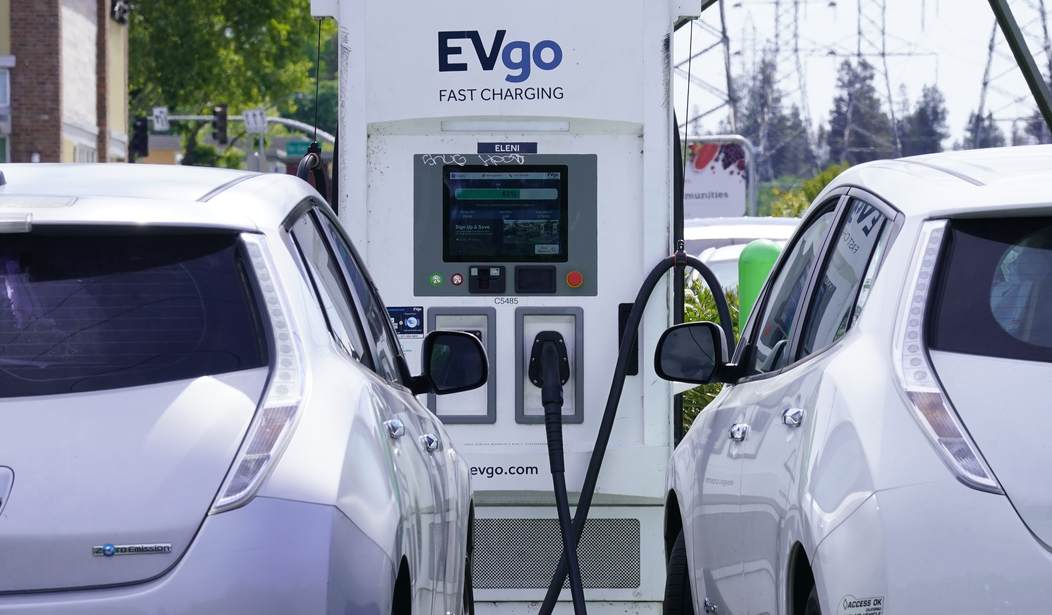There can be little doubt in any serious person’s mind that Green technology is an unmitigated disaster. It is no longer an issue of Big Oil, which the Leftwaffe is strafing and bombing daily, but of the multi-billion-dollar industry of Big Green, or the Climate-Industrial Complex. The game has changed. As The Epoch Times reports, “a powerful lobby of politicians, scientists, and media pushes climate-related falsehoods into the popular perspective,” to the advantage of Big Business and the attendant cohort of technopreneurs.
Whether we are considering the fantasy of costly, inefficient, and environmentally harmful wind farms, the array of solar panels under the cloudy skies and grey winters of the northern hemisphere, or even the pending legislation against gas stoves—“now you’re cooking with gas” is an expression that may have seen its last days—we must prepare for a penurious and meager future. Moreover, renewables are not keeping pace with the doing away of conventional and nuclear sources of energy, which means that the national energy supply may be increasingly depleted before the shortfall can be made up—if ever.
A comprehensive report by the Geological Survey of Finland concludes that “replacing the existing fossil fuel powered system (oil, gas and coal) using renewable technologies, such as solar panels or wind turbines, will not be possible for the entire global human population.” It will not be possible for even a much smaller proportion of the human population. The situation is analyzed in exhaustive detail in an important book, Clean Energy Crisis, that puts paid to the reigning delusion about the so-called “sustainability” platform. Absent a mixed basket of nuclear power, fossil fuels, biofuels, and a moderate infusion of wind/solar, green may be everywhere, but it is going nowhere.
Related: Three Huge Reasons Why Electric Vehicles Will Never Dominate American Roads
A similar thesis is developed by Alex Epstein in a major study dealing with the energy controversy, Fossil Future, which I cannot recommend highly enough. Epstein utterly demolishes both the economic and the moral arguments for unrestricted renewables and shows how cost-effective energy, primarily fossil fuels and nuclear power, are essential to human flourishing. Ultimately, “one factor that will contribute to breaking the moral monopoly [of left-wing “experts”] is reality.”
For that matter, reality can impinge in many different ways. Just the other day, I was nearly run down by a stealth Electric Vehicle whose approach I couldn’t hear. I barely escaped this silent assault, which got me thinking about the latest craze favoring EVs—or EVils—as a reliable substitute for vehicles powered by internal combustion engines (ICEs). We know the problems of battery-powered vehicles, which by any scrupulous account are demonstrably intractable. The downsides include:
- limited travel range
- long recharging periods
- a radically insufficient infrastructure to accommodate a growing fleet of EVs
- the complete inadequacy of the electrical grid
- high unit price
- prohibitive cost of battery replacement
- negligible resale value
- and the need for rare earth metals such as lithium, cobalt, graphite, nickel, and palladium that are labor-intensive and exorbitantly expensive to extract.
Furthermore, according to Earth.Org, EV’s are not eco-friendly, as we are regularly pressured to believe. The EV manufacturing process is more energy-hungry than that of an ICE vehicle. A 2021 study comparing EV and ICE emissions found that 46 percent of EV carbon emissions come from the production process, while ICE vehicles produce 26 percent. “Almost 4 tonnes of CO2 are released during the production process of a single electric car; in order to break even, the vehicle must be used for at least 8 years to offset the initial emissions.” We are warned that “quick adoption of EVs by the government could lead to indiscriminate mining of nickel, cobalt, and lithium, which are finite resources, leading to even more environmental harm.”
All these factors clearly indicate that EV technology is in its infant stage, doubtlessly a decade or more away from refinement. Perhaps the new Israeli invention of a 23-pound, cost-effective, single-action-piston, fuel-efficient, technologically advanced car engine, along with the development of hydrogen-fueled engines, will in time enable a workable—or at any rate, a partial—solution to the problem.
Guillaume Pitron’s book, The Rare Metals War: the dark side of clean energy and digital technologies, is a must-read exposé of the current delirium regarding the overall feasibility of immaculate energy and the flaws inherent in EV production and performance. Automotive companies heavily invested in EV manufacture may well find that their fanciful calculations lead not to a continuing spike in demand but to declining profits as the public eventually reacts to the crippling drawbacks and manifold limitations of an imperfect technology. A scalable model for a large consumer market may turn out to be a mirage.
Pitron notes that the “quest for a more ecological growth model has resulted in intensified mining of the earth’s crust to extract the core ingredients—rare metals—with an environmental impact that could prove far more severe than that of oil extraction…The shortages already looming on the horizon could burst the [green tech] bubble…setting ourselves up for…an era of new and unprecedented shortages, tensions, and crises.”
Additionally, Chinese control of materials availability will transform the geostrategic power struggle, market dominance, and supply chain issues in China’s favor. The Financial Times reports that “most of that metal makes its way to China, where it enters the global battery supply chain.” Similarly, Frontier Resource Group’s Erik Prince points out that “China has made a strategic focus to dominate [the rare earth] piece of the trade, they’re focusing on electrical vehicles.”
But there is yet another factor that negates the progressivist ideology of environmental care and egalitarian principle. It is not only the ravages of rare-metal strip mining and its toxic effluents contaminating land and water that calls the green agenda into question. It is the very nature of the productive workforce conscripted to unearth these materials.
In an era in which the progressivist Left, aka the ruling class, decries “white supremacy,” supports the BLM movement, and lobbies for reparation payments to the Black community in order to somehow redress the historical infamy of antebellum slavery, it colludes in promoting the introduction of EVs, with the atrocity of using black children in the Democratic Republic of the Congo as virtual slave labor to mine raw cobalt for the manufacture of lithium-ion batteries. Heavily subsidized by China, the Congo mines more than 70 percent of the world’s reserve of cobalt— some estimates suggest it may be as high as 90 percent. According to Congressman Chris Smith, ranking member of the House Foreign Affairs Subcommittee on Africa, mineral exploitation depends on “the labor trafficking of more than 40,000 children… toiling in non-regulated artisanal mines under hazardous conditions.” This is an indelible stain on the conscience of the Left, which it willingly accepts. The hypocrisy is monumental.
Admittedly, many of the products we use daily are produced in Third World sweatshops. Unless we agree to run around naked and barefoot, or live off the grid in bearskin pelts, there is not a whole lot we can do about it, apart from striving to improve these conditions via boycott and Human Rights legislation, with perhaps some small degree of success. That is at least something. The rare metals ignominy is another matter since efforts to remedy the situation are nominal and implausible, and child slavery, especially among black children, is an evident blasphemy on two counts: it is racist, and it is a crime against children. Our shiny EVs are a hidden sign of the moral squalor and corporate avarice they represent. True, many EV owners are unaware of the disgrace, only wishing to be ecologically sensitive, or susceptible to the propaganda assault to which they are subjected. The onus falls upon the bad faith of the progressivist Left, the political elite, the high-tech sector, and their industrial fellow travelers.
In any case, the electric vehicle is in its experimental phase. It may be the wave of the future, but the future is not now. The comber is premature. It waits upon the construction of an extensive infrastructure of charging stations and repair facilities; the vast expansion of the electrical network; a sweeping advancement in battery technology and power-source innovations; the safeguarding of the environment, including reclaiming the poisoned land, lakes, and rivers in the quarry regions; the containment of ensuing geopolitical tensions; and no less crucial, the eradication of child slavery and racist indifference, a continuing blight upon humanity.
We need to be vigilant. A stealth juggernaut approaches and far too many of us cannot hear it coming.










Join the conversation as a VIP Member